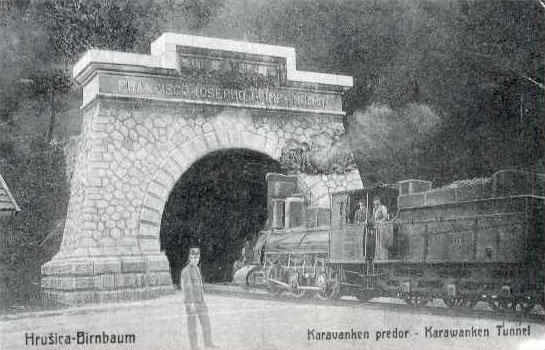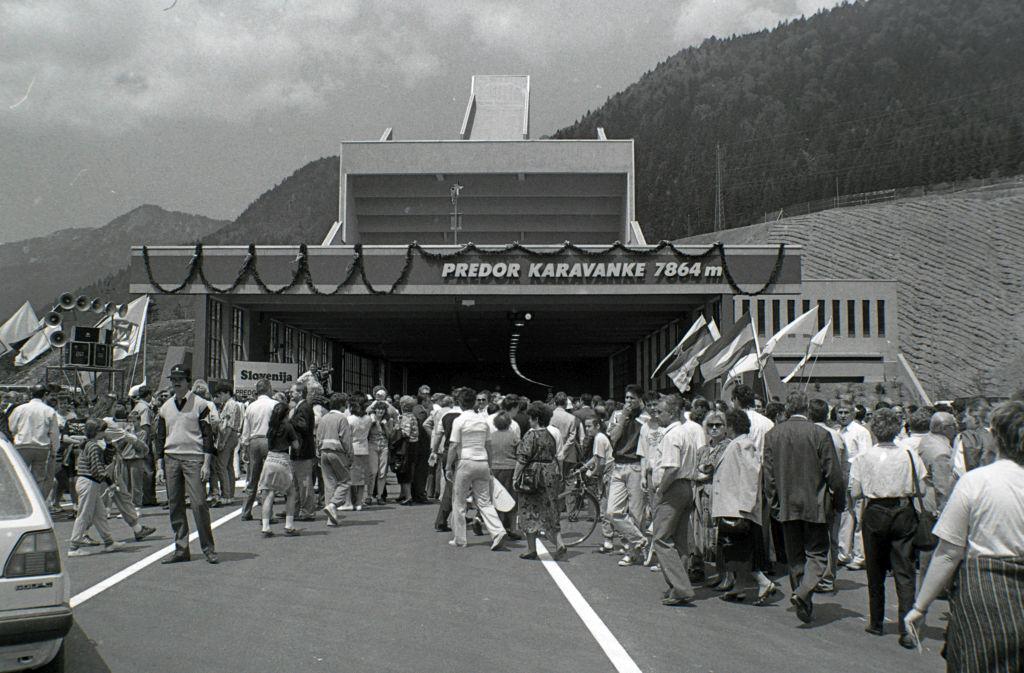

For more than a century, a rail tunnel has served as a vital link under the Karavanke Mountains that separate Slovenia from Austria. Its construction was fraught with difficulty, but once completed, the tunnel became one of the most important segments of the Slovenian railroad network – and was followed by an equally important road tunnel almost 90 years later.
The story began in the 19th century, when the Hapsburg Empire lost the port of Venice. Trieste then became the main port for the entire country, but because of the Alps to its north, it lacked direct rail access to the Imperial capital of Vienna. The authorities therefore decided to construct a new rail line through the territory of modern-day Slovenia. The plans called for the construction of a major tunnel through the Karavanke mountains near the Slovenian industrial town of Jesenice.
Construction of the tunnel began in 1901. At first, the work was done mainly by hand, but the construction company eventually brought in state-of-the-art electrical and pneumatic equipment. Some of it was powered by a small hydroelectric plant built in the scenic Vintgar Gorge. The company even constructed a narrow-gauge railroad which was used to bring in stone to fortify the tunnel.
About 3500 workers from all over Austria-Hungary – from Italy to modern-day Poland and Romania – worked on the Jesenice end of the tunnel alone. Some even came from abroad, as far away as Albania. At almost 8 kilometers in length, the tunnel was one of the biggest building projects is Europe.
It was also one of the most challenging projects of its kind. The tunnels would frequently collapse, and intrusions of subterranean water frequently interrupted the excavation work. But the biggest disaster happened in November 1904. Several workers noticed the presence of methane in the tunnel after blasting work. Unfortunately, one of the employees fell and broke his lamp as he was evacuating the tunnel. The fire caused a massive explosion of methane that eventually claimed 15 lives. A memorial to the victims of the accident can be seen in the town of Jesenice to this day.
Just months after the accident, workers from the southern and the northern ends of the tunnel met for the first time. This was a cause for major celebrations, with live music and festivities. In 1906, the tunnel was finally completed; it was reopened by the Archduke Franz Ferdinand himself.
In just more than a decade, Austria-Hungary would collapse and the tunnel became split between the rump Austria and the new South Slav state. The railroad survived the political changes, however, and remained a vital rail link in this part of Europe.
In 1990, the rail tunnel was joined by a road tunnel nearby. Despite the advances in technology, the workers faced some of the same difficulties experienced by their predecessors at the beginning of the century, with large quantities of water posing a constant problem during construction.
Today, 110 years after the original rail link was opened for rail traffic, both tunnels serve as important connections between Slovenia, Western Europe – and the world beyond.
Jaka Bartolj

































































